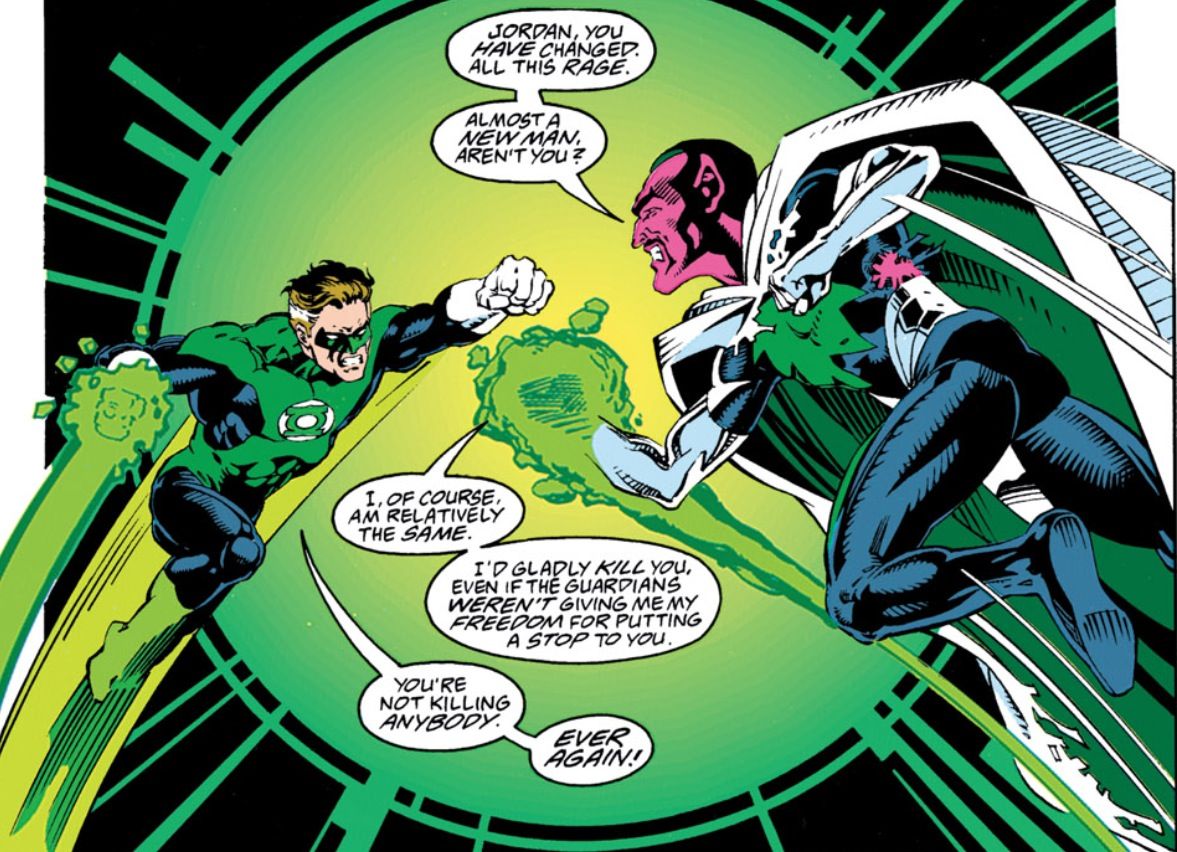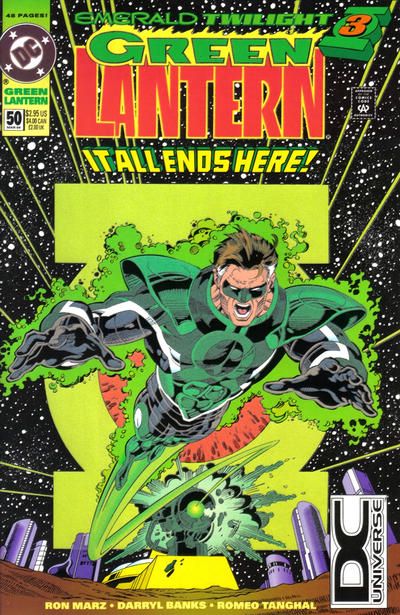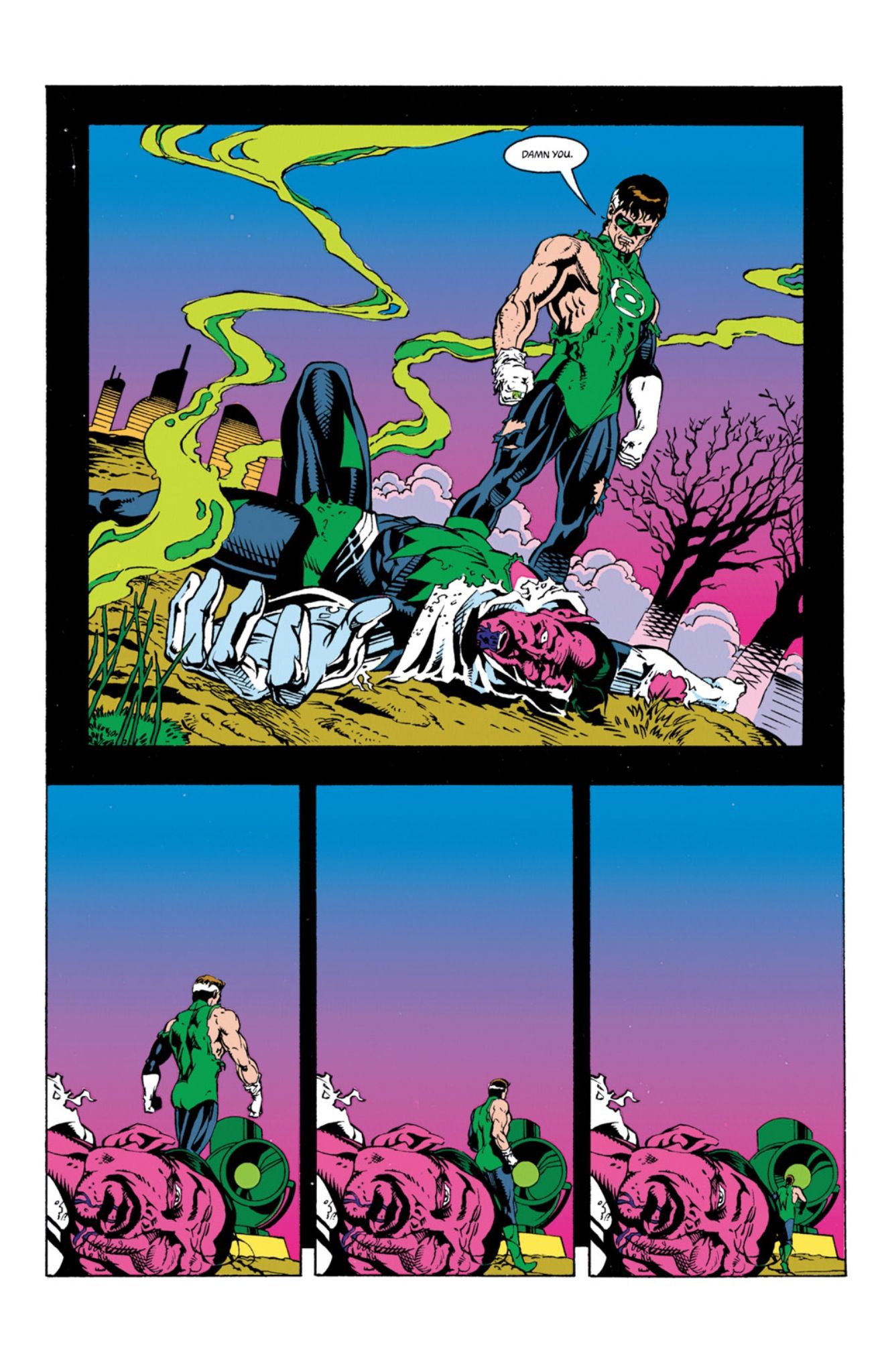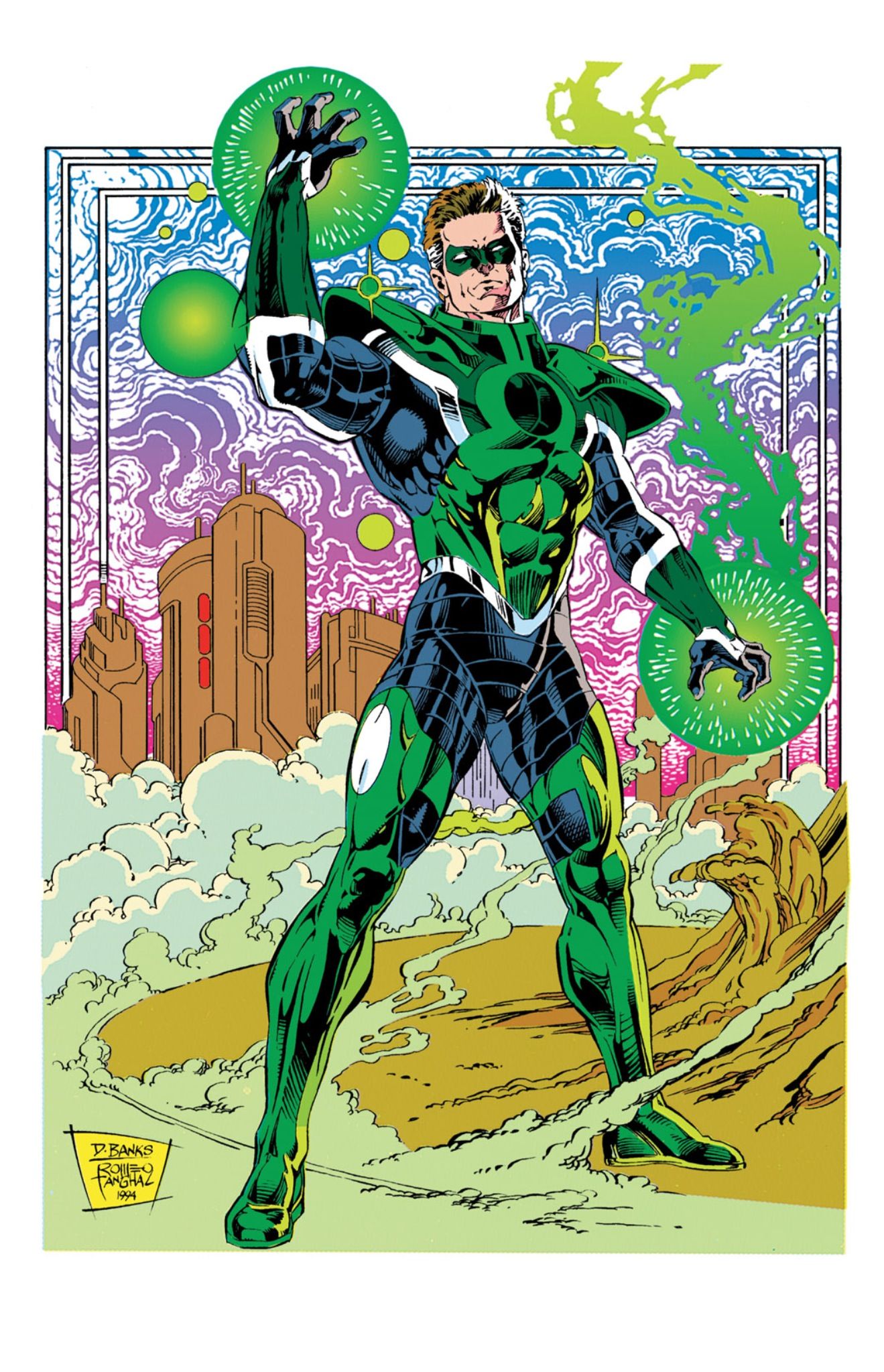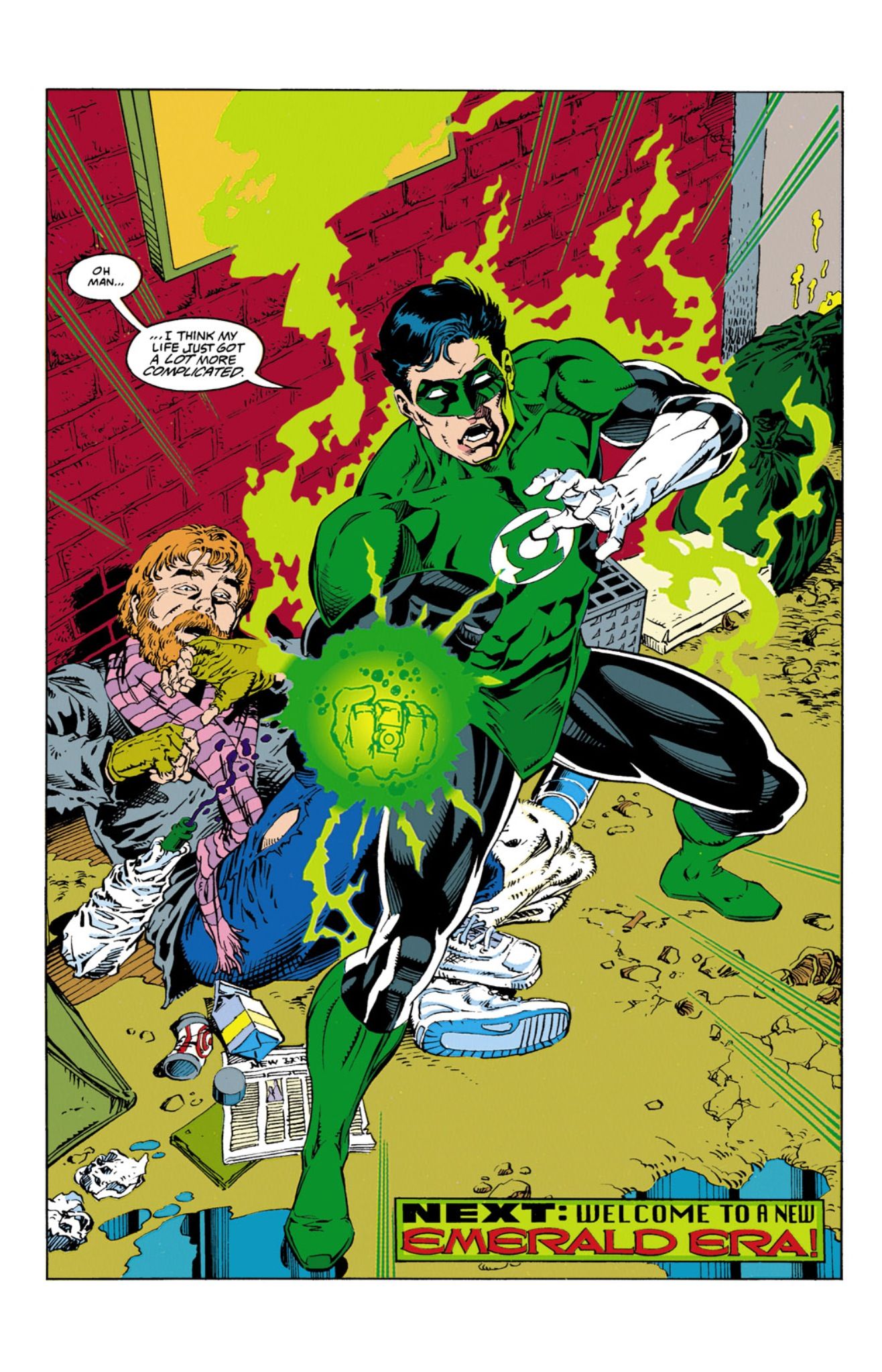In this column, Mark Ginocchio (from Chasing Amazing) takes a look at the gimmick covers from the 1990s and gives his take on whether the comic in question was just a gimmick or whether the comic within the gimmick cover was good. Hence "Gimmick or Good?" Here is an archive of all the comics featured so far. We continue with 1993's glow-in-the-dark cover for Green Lantern #50.
Green Lantern #50 (published March 1994) – story by Ron Marz, art by Darryl Banks and Romeo Tanghal
The early-to-mid 90s marked an era of significant change for a lot of DC’s flagship superheroes. There was 1992’s “Death of Superman” storyline which saw the “Man of Steel” (temporarily) die, followed by the “Knightfall” arc that resulted in Bruce Wayne having his back broken and a new Batman taking his place. By the time the calendar turned to 1994, DC’s set its status quo changing sights to Hal Jordan, the man who had wielded the Green Lantern power ring since 1959. But rather than kill or cripple Jordan, DC destroyed his home city (in the “Reign of Superman” storyline), causing Hal to go bonkers, murder his fellow Lantern Corps. and the Guardians of the Universe, and become the supervillain Parallax, while Kyle Rayner emerged as a new Green Lantern. To “celebrate” this dark turn in comic book history, DC published a glow-in-the-dark green and yellow cover for Green Lantern #50, the third and final part of the “Emerald Twilight” storyline.
But what about inside the comic?
Based on some feedback I received on Twitter, I get the sense that Green Lantern #50 is a polarizing book for ardent fans of Jordan and the Lantern Corps. One person told me “Emerald Twilight” is the Green Lantern equivalent to Spider-Man’s “Clone Saga” – a story where everything that is likeable and comforting about a character gets flushed down the toiled in an attempt to make a super big splash. Others told me they really enjoyed “Emerald Twilight” and were fans of the Rayner-centric storylines that followed.
Personally, while I recognize that this storyline and this specific issue have a number of gimmicky attributes – the death of a number of long-term characters like Sinestro and Kilowog; the shocking heel-turn by a hero; the debut of a brand new hero without much background or build – as someone who is admittedly not a hardcore fan of the Green Lantern series and all its iterations, I thought this was a gimmick comic done well. I was engaged by the conflict, thought Jordan’s descent into madness was well told by Marz, and that all of the visual emotional beats were well captured by Banks and Tanghal.
Overall, despite its high body count, I thought the “Emerald Twilight” arc is a good example of (if I may borrow a phrase from the Spider-Man universe) the conflicts that come with “power and responsibility.” The destruction of Jordan’s hometown Coast City via the hands of a supervillain leave him irreparably broken and the moment where the character finally “snaps” – when one of the guardians scolds Jordan for using his ring for “personal gain” by recreating his hometown and his family and friends – is crafted by Marz in a way that makes me sympathize with Hal. There is something inherently unfair about how Jordan can’t do anything to save Coast City and how in a moment of mourning-induced weakness, he is scolded like a child for abusing his powers as a Lantern.
Granted, it’s hard to sympathize with Jordan after he beats down the Lantern Corps. and steals their rings, leaving them for dead in the void of space. And once he finally arrives at the Guardian’s planet of Oa in Green Lantern #50, it’s plainly apparent that the character crosses a dark line he from which he won’t be able to return. Marz then raises the stakes some more by pitting Jordan’s insanity against an even greater insanity, the villainous Sinestro, who is freed from imprisonment by the Guardians in a last-ditch effort to prevent Hal from laying everything on Oa to waste.
The Sinestro/Lantern battle is an epic one, with the newly-turned Jordan taunting both his adversary and the Guardian’s for being “crazy” enough to pin their dwindling hopes on an established villain. Sinestro meanwhile completely underestimates just how far gone Jordan is. Banks and Tanghal use the confrontation to craft some truly stunning splash pages and visuals that simultaneously move the action forward while still being pretty to look at.
And then after the grandiosity of dueling power rings for a few pages, the death blow Jordan delivers to Sinestro is so shockingly brutal in its simplicity – Hal casually snaps Sinestro’s neck – the hero’s transformation into pure evil seems complete. The overall sorrow of this event is captured in a chilling sequence of panels depicting Sinestro’s prone dead body in the foreground and Jordan disappearing into the background where the reader knows the Guardians and the Central Power Battery are waiting for him.
But that’s not before one more emotional confrontation. Kilowog arrives at the scene confront Jordan and Marz finds a way to give the reader a glimmer of hope – that maybe something can stop these spiraling order of awful events that otherwise feels ominously inevitable. Instead, Jordan disposes of Kilowog too, leaving behind his ashen remains.
For those who think poorly of “Emerald Twilight,” I could certainly identify this sequence as a bit of overkill. For me, Jordan crosses to the dark side the second he brutally murders another being by snapping their neck. At that point, Jordan is well past redemption and using Kilowog as additional fodder seems like a cheap ending for a character that had been kicking around in Green Lantern continuity since 1986. The art team tries to add depth to the moment by showing a very despondent Jordan kneeling next to Kilowog’s remains, but the moment would have landed a bigger emotional punch if it happened before the Sinestro scene to really bring home the premise that Jordan was crazy enough he’d murder a friend or in place of the Sinestro battle as Hal’s ultimate “turning point.”
Some of the final images of the issue are some more great looking splash pages that set up the next generation of Green Lantern stories. The first is Jordan emerging from the Central Battery as Parallax.
The other is a newly-minted Green Lantern-ized Rayner – a character who is introduced two issues earlier but otherwise we know nothing about. Why is he chosen by Ganthet, the one surviving Guardian, to be the new Green Lantern? The whole thing feels incredibly rushed, but as the goal is to get people to want to read the following month’s issue to find out, it totally works as a set-up for the next big Green Lantern arc.
Hal Jordan would continue on as Parallax for the next 10 years until the Green Lantern: Rebirth storyline brought him back to the forces of good. From a commitment to the premise standpoint, this certainly beats out how quickly DC caved on bringing back Superman (less than a year) and Bruce Wayne as Batman (again, about a year). Though, as popular as Green Lantern was, he was nowhere near the cash cow for DC that Superman and Batman/Bruce Wayne were (and continue to be) in the 1990s.
And while I certainly can appreciate the criticism “Emerald Twilight” and Green Lantern #50 received in its hey-day, and continues to receive to this day, I found it to be an enjoyable read with artwork that was also up to the challenge of creating a momentous and memorable moment that didn’t feel as cheap and gimmicky as a host of others that transpired in the DC and Marvel universes during the Chromium Age.
Verdict: Good

